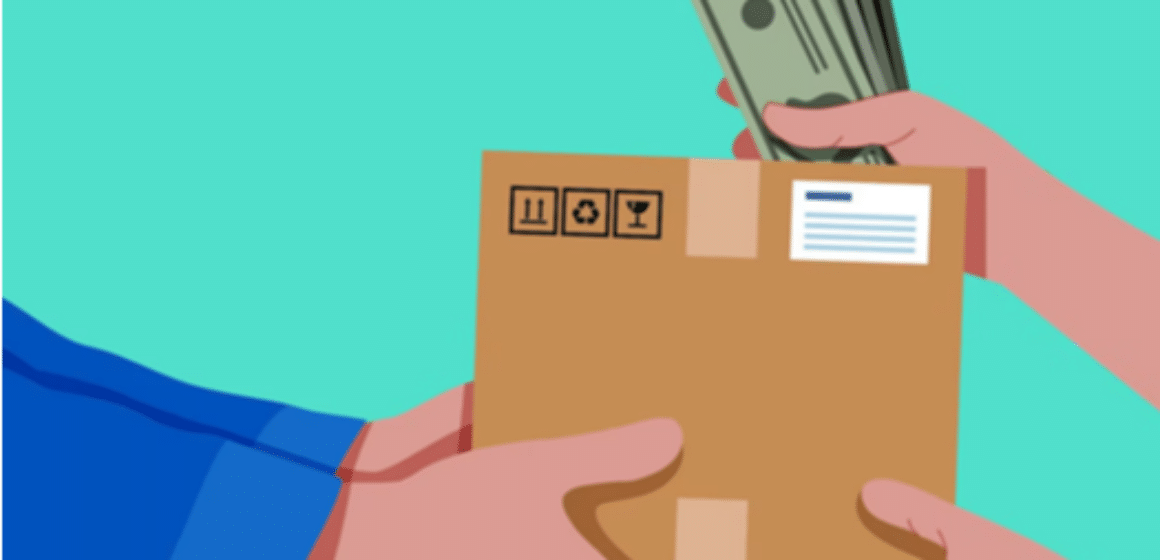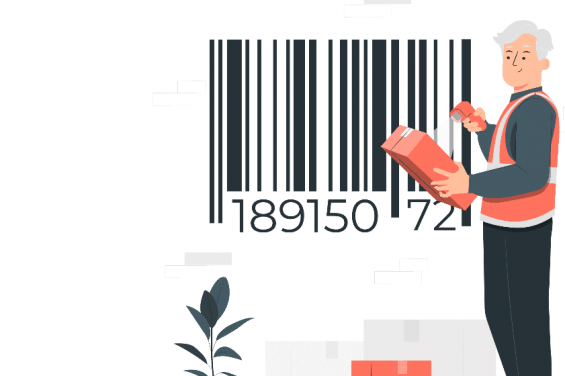As an Amazon seller, you may be conversant with the huge profit potential that accomplices selling on the world’s largest online marketplace. Understanding the breakdown of the shipping cost of goods for Amazon FBA sellers is crucial. With this knowledge, sellers can best calculate their profit margins, maximize their business, and capitalize on the enormous profits.
Navigating the shipping fees to Amazon FBA can be tricky, even for the most experienced seller. In this in-depth reading, we’ll unlock how much it costs to ship to Amazon FBA, how to calculate the shipping cost, factors affecting shipping freights, the shipping insurance costs, etc.
Overview
When you’re shipping from China to the Amazon fulfillment center, 3 types of costs comprise the Amazon FBA shipping cost – freight, duty, and insurance.
The calculation formula goes thus:
Total Amazon FBA shipping cost = Freight + Duty + Insurance.
| Breakdowns of cost | Who charges? | When charges? |
| Shipping Freight | Freight Forwarder | Before Shipping |
| Customs Duty | USA Customs | After Clearance |
| Shipment Insurance | Insurance Company | Before Shipping |
An accurately calculated shipping cost ensures profitability and helps achieve cost-effectiveness. The Amazon FBA fee calculator helps sellers achieve an accurate cost because it’s straightforward. To do this;
- Enter the estimated weight and packaging dimensions of your products.
- Then, input the self-fulfillment details, like the price of the shipping items to Amazon, storage fees, shipping costs, and cost of the goods sold.
- Once done, click the yellow button, “calculate.”
The calculator will estimate the costs and ROI for the cost of fulfillment by you and the Amazon fulfillment center.
How Much is Freight Shipping from China?
How much does it cost to ship freight from China? This question can be answered by considering several factors, such as the destination country, specifications of the package (size, weight, and quantity), mode of transportation (sea, rail, air), etc. These factors are further discussed below;
1. Specifications of the Package
The package’s weight, size, and quantity significantly impact the shipping cost of products to Amazon FBA. These specifications are primarily used to calculate the shipping fee. The volumetric weight in logistics costing is calculated by multiplying the box height, breadth or width, and length and dividing by 5000. And it’s usually in centimeters or inches.
2. Destination Country
As a seller on Amazon, shipping to various destination countries, such as shipping from China to the UK or the USA, comes with different shipping costs. Also, shipping to other locations within the same country comes at different rates. For instance, shipping cost to the US West differs from the same country’s East Coast. Factors such as transportation demand, accessibility, and infrastructure could be responsible for these differences.
3. Shipping Method/Mode of Transportation
Amazon FBA shipping has assorted modes of transportation – air freight, sea freight, train/truck, and express freight. Each shipping method comes with its own shipping cost. For example, air freight is more costly than sea freight, which is cost-effective for transporting large volumes of products at a longer distance.
For more information about shipping methods, please read:
4. Carrier
The shipping price rates vary depending on the Chinese freight forwarders and AGL you decide to implore. If you use Fulfillment by Amazon as an Amazon seller, you’ll enjoy a negotiated lower shipping rate when dealing with partnered carriers like UPS.
This implies that if you’re shipping a box weighing 15 Ibs (6.8kg) from Ottawa to Brampton and select the ship by “Amazon-partnered carriers,” which is UPS, the cost will be $9.00. However, if you use Canada Post to transport the same item, you’ll pay $20.00. So, it’s advisable to use Amazon-partnered carriers, except you have a shipper with a reduced rate.
5. Incoterms
As an Amazon seller, striking deals between DDP and FOB influences items’ shipping costs. DDP refers to shipping items from a Chinese factory to an Amazon warehouse. So, using this term covers all shipping costs. On the other hand, FOB means shipping products to the port only, and additional fees, such as transportation and delivery, are omitted.
Average Estimated Cost of Shipping for the Various Modes of Transportation
Comparing the costs of the different shipping methods helps you make an informed decision for your business. In this section, we’ll consider the cost features of shipping methods.
- Air freight and Express: Both shipping methods are fast. However, Express is more expensive than the former because it’s a door-to-door service. The average cost of shipping a 100kg item by air from China to the USA is $725.76.
- Sea freight and Train: Both modes are economical, but sea transportation is more common than trains. Although the shipping costs are similar, the train is only accessible to land countries.
How Can I Calculate the Shipping Rate?
As earlier addressed, it’s best to calculate the shipping rate before shipping to Amazon FBA to maximize profits for your business.
In addition, FBABEE can offer you a free quote, but you need to prepare the following information before we proceed. Make a list, answering the following questions;
- Where your items are coming from (China) and where it’s going (destination warehouse).
- What’s your preferred shipping method (air, sea, etc.)?
- How many packages you’re sending, and what are their sizes and weight?
- When you’re sending it? Because the potential rate fluctuates.
Notice: Steer clear of the extra charges caused by volumetric weight.
- Volumetric Weight = Length x Breadth x Height/Volumetric Divisor.
- The standard Volumetric Divisor is 5000 for the weight in KG and dimensions in CM by air express.
- Standard Volumetric Divisor is 6000 for the weight in KG and dimensions in CM by air freight or sea freight.
- How do you save costs by avoiding volumetric weight?
- The volumetric weight usually appears on light products with small sizes. To stepavoid its cost, decrease the excessive packaging. That is, you have to reduce your packaging dimensions.
How Much Does Customs Clearance Cost?
Customs clearance means taking goods from the customs authority to enhance cargo movement into the importing country and outside the exporting country. It involves preparing and submitting some documents that permit relevant authorities to facilitate importing goods to another country.
Customs clearance is necessary for international shipping because it allows the shipper to transport goods to another country once the required documentation is met. The document confirms that the customs duties have been paid for shipment processing.
The three types of costs involved in customs clearance are;
- Import duties (tariff)
- Taxes (VAT in Europe and Bond in the USA)
- Customs broker fees
Therefore, the formula for calculating a customs clearance fee is:
Duty + Tax + Clearance=customs clearance costs
How to Calculate Customs Clearance Charge?
The steps below will act as a guide for an Amazon seller to go through how to calculate customs costs:
Step 1: Search for your products’ Harmonized System (HS) codes. These codes are standardized numerical methods of grouping traded products and are usually used throughout the export process of products.
Step 2: Look up the taxes for certain HS code in official website of USA customs and calculate the duty of your products.
Step 3: Go to confirm from clearance agents if there are clearing charges.
Note: To minimize customs clearance costs and ensure a smooth clearance process, follow the rules and regulations of the Amazon warehouse and your freight forwarder to avoid penalties.
How Much is Shipping Insurance?
The protective measure of securing items for shipment is known as shipping insurance. Amazon FBA insurance is crucial to protect sellers’ goods while in transit. The two types of FBA insurance are;
- FBA warehouse that covers the first and second legs.
- E-commerce express covers the entire transportation process.
What are the Factors Affecting Shipping Insurance Costs?
- Product Value and Category: Goods such as perishable items, large machinery, valuable electronics, luxury items, flammable materials, etc., have more expensive cargo insurance coverage than items like toys or plastics.
- Shipping Route: Some shipping routes are riskier than others, costing more. For instance, mountainous, remote, or icy areas have higher insurance rates.
- Destination: The destination where the goods are headed equally influences the shipping insurance cost. The farther the location, the higher the cargo insurance cost.
- Risk Management Strategy: Adhering to risk management strategy training from shippers often lowers the cost insurance of freight, especially if your business is of a higher risk.
How to Calculate Cargo Freight Insurance
Step 1: Reaffirm the value of your goods.
Before you can calculate the appropriate cargo insurance coverage, you need to accurately determine the value of your goods. The higher the value, the higher the insurance costs.
Step 2: Confirm the level of insurance coverage from your provider.
Once you have reaffirmed the value of your goods, consult your insurance freight forwarder to confirm the level of insurance coverage. Your existing coverage would partially or fully protect your cargo during transit, dependent on the insurance types.
Step 3: Request a free quote from FBABEE
To determine the cost of cargo freight insurance and assess whether you need to purchase additional coverage, consider reaching out to FBABEE or other reputable insurance providers.
Things You Need to Consider When Selecting the Right shipping Insurance Coverage for Your Shipment
- Know the value of your cargo, including the cost of any damage or replacement that needs to be fixed.
- Select a good and reputable shipping company because some companies offer better insurance coverage than others.
- Insurance rates vary depending on the shipping method you implore. Therefore, consider the shipping method to use.
- Ensure you get quotes from multiple insurance companies before choosing one because the rate varies.
3 Tips for You to Save More Costs on Shipping
As an Amazon seller, knowing how to save more costs on the shipping to Amazon is of high importance. In all, we can sunmarize three tips that are usually cost-effective for international transportation:
- Avoid delivery during peak-time of giants
Peak shipping times, such as when technology giants like Samsung or Apple publish and sell products overseas, can lead to increased shipping costs due to high demand for shipping services.
To save on shipping expenses when sending your products to Amazon, consider scheduling your shipments during non-peak periods.
- Avoid setting up your shipping plan through China’s Holidays
China has several major holidays, such as Chinese New Year and Golden Week, during which many manufacturing facilities and logistics services in China may shut down or operate at reduced capacity. Shipping during these holiday periods can result in higher costs and longer lead times.
To optimize your shipping costs, plan your production and shipping schedules to avoid coinciding with China’s major holidays.
- Reasonably use intermodality in your shipping plan
Intermodality enables sellers to find balance between shipping time and shipping costs. When you ship 1/3 of your product volumes by air and 2/3 by sea, you can save the shipping costs that air freight could have charged if all the products are shipped by air, but you still win the shipping time with part of your products to rush to the fulfillment center without waiting for them all.
By planning your shipments strategically, you can reduce transportation costs and ensure timely delivery to Amazon fulfillment centers.
FAQs
The cost of shipping freight depends on weight, dimensions, destinations, etc. The various shipping methods, like air freight, sea freight, rail freight, etc., also impact the shipping cost. Therefore, comparing prices from different shipping providers to get the best deal (cheapest way) based on your requirements is advisable.
Shipping from China is costly due to some reasons like distance between both countries, transportation fees, customs duties and taxes, handling fees, and cost of fuel. In addition, complex international logistics and the need for authentic and reliable services affects shipping cost.
Although the insurance of Amazon FBA (Fulfilment by FBA) is not compulsory, it’s highly advisable. Limited reimbursement is provided for lost or damaged inventory, but with additional insurance coverage, goods have extra protections. So, liaising with your insurance provider is advisable to determine the best insurance cover for your needs.
Conclusion
As we wrap up, we painstakingly considered:
- The cost of shipping goods from China to Amazon fulfillment centers.
- How to accurately calculate the cost of shipping items to Amazon FBA to maximize profit for your business.
- How to calculate customs clearance and duty fees, etc.,
Therefore, we encourage sellers to proactively take steps to optimize their shipping strategies to maximize enormous profitability.



